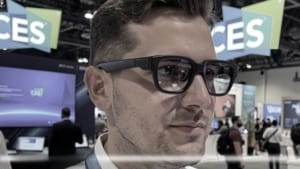Spotify users face volume control changes on iPhone
Starting September 3, Spotify Connect users on iPhones will lose the ability to control volume with physical buttons due to Apple's changes.

If you’re a Spotify user on an iPhone, be prepared for a change in how you control the volume on connected devices. From September 3, you will no longer be able to use the physical volume buttons on your phone to adjust the sound on nearby speakers, smart TVs, game consoles, or any other device connected through Spotify Connect. Instead, you’ll have to use an in-app slider to make these changes.
Table Of Content
This development comes after Spotify announced that Apple had “discontinued” the technology that allowed iPhone users to control volume on connected devices using the physical buttons. As a result, users are now left with the inconvenient task of managing volume levels through the Spotify app itself.
How will this affect you?
Spotify Connect, a feature many of you rely on to control music playback across various devices, is at the centre of this change. It allows your phone to act as a remote control, seamlessly adjusting volume levels and skipping tracks on any connected device. However, with this recent update, when you try to use the physical volume buttons on your iPhone, a notification will appear asking, “Want to change the volume?” You will then have to tap on this notification and use the volume slider that appears within the app.
This slider will automatically pop up if you press the volume button while the app is open. Some of you may have noticed this change, as it has started rolling out ahead of the official date.
Why is this happening?
According to Spotify, Apple has forced the change upon them. The music streaming giant claims that Apple has refused to grant it access to the same technology that allows Apple Music to play on third-party devices. As a result, Spotify says using the iPhone’s physical volume toggle has become “unstable,” causing issues like sudden volume spikes during playback.
Spotify argues that this new in-app solution will provide a “persistent, high-quality” volume control experience. This isn’t the first time such a change has occurred; a similar issue has been reported with the Sonos app, which no longer allows iPhone users to adjust volume using physical buttons.
In an update, Spotify said, “We’ve made requests to Apple to introduce a similar solution to what they offer users on HomePod and Apple TV for app developers who control non-Apple media devices.” However, Apple responded that apps must be integrated into the HomePod system to gain access to this technology.
What does this mean for third-party music services?
This is not the first time Spotify has clashed with Apple over access to key iOS technologies. Despite some third-party music services being able to stream directly to Apple’s HomePod, many major platforms, including Spotify, have not implemented the required API. Instead, they use AirPlay, Apple’s wireless streaming protocol, to play songs. While this process was slightly streamlined with iOS 17, allowing users to ask Siri to start an AirPlay session, it still lacks the simplicity of direct integration.
Spotify has been vocal about its ongoing disputes with Apple, accusing the tech giant of “restricting interoperability” with other platforms. They suggest that this could be a breach of the European Union’s Digital Markets Act, which aims to prevent “digital gatekeepers” like Apple from unfairly blocking third-party services.
For now, iPhone users who enjoy listening to Spotify on connected devices will have to adapt to these changes. Whether this sparks further debate between the two tech giants remains to be seen, but for now, your physical volume buttons will no longer serve their usual purpose when using Spotify Connect.













